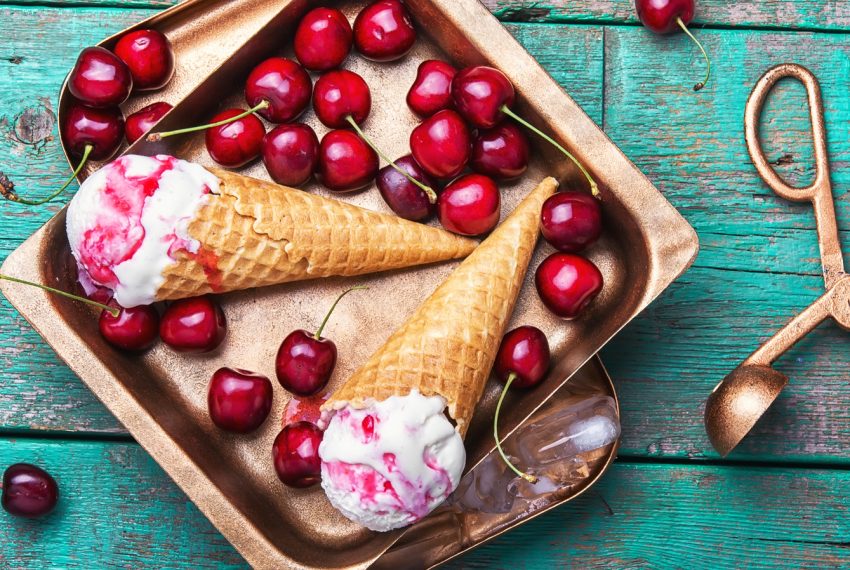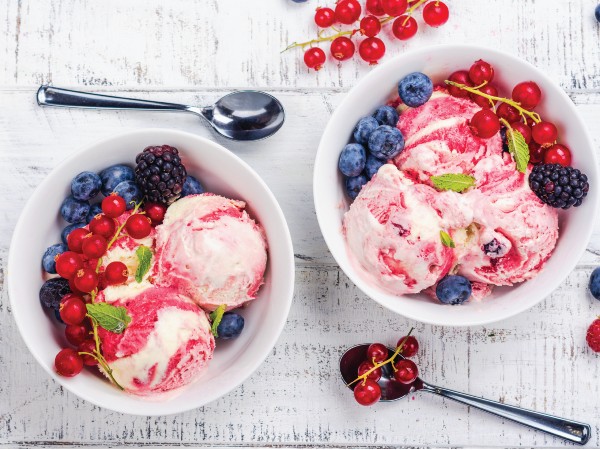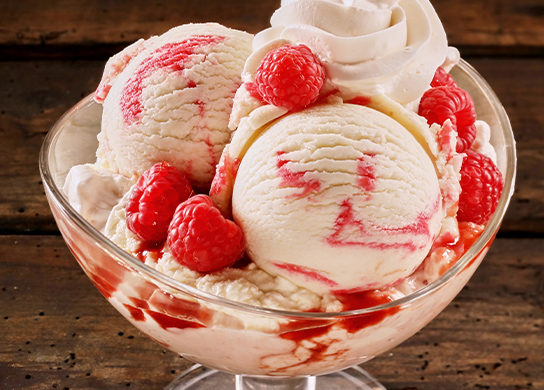Variegates

Variegate Technology
Swirls of thick fudge, spirals of tart raspberry, and ribbons of caramel with crunchy bits of toasted coconut. These sensory igniting elements are referred to as variegates. They’re folded into layers of creamy ice cream and consumed by millions of frozen dessert lovers every single day.
High-quality variegates can be the difference between a frozen treat that is nice to indulge every now and then versus a household necessity in every freezer. Our variegates are specifically engineered to boost flavor, provide unique texture components and enhance the eye appeal of your products. The proof is in the pudding… or should we say the fudge and caramel ribbons.
What Are Variegates?
The meaning of the word “variegate” is simply to change in appearance. In the food industry, variegates (also referred to as ribbons, ribbonettes, swirls, spirals, revels, etc.), are textured flavor dimensions primarily used in ice cream and frozen desserts. There are a few different types including water-based variegates, emulsion-based variegates and oil-based variegates. The type that you choose depends on the desired flavor and texture of your ice cream.

Ice Cream for Breakfast
Expand the meal occasion for ice cream by creating flavors, formats, and concepts positioned for breakfast or “anytime snacking”.
Balchem conducted consumer research on ice cream buying and eating habits and uncovered an opportunity for new positioning!
Learn more, including tasting some creamy, dreamy concepts and reviewing the corresponding consumer purchase interest and insight data!

Variegate Applications
Variegates can be blended into ice cream prior to filling by using a variegating pump or by using a stationary or spinner head. Different heads offer flexibility by offering various sizes and tube quantities for distribution. You can also achieve various patterns, depending on the equipment.

Variegate Viscosity
Water-based variegates and emulsion-based variegates can use similar stabilization systems including starches, gums, pectin and a variety of combinations of these. Emulsion-based variegates can also use homogenization as another means of creating viscosity in addition to or in place of the stabilizers listed above. Emulsion-based variegates may also require tempering based on fat content.
Fat or oil-based variegates have no water which means they cannot rely on stabilizers for viscosity. This means that their viscosity is controlled by the types of fats/oils used along with the appropriate level of other solids like cocoas, sugars, etc. Fat-based variegates may require extra care in use as they may need to be tempered to facilitate flow, lines and pumps need to be flushed with oil and feed lines may need to be heat traced in order to assure a consistent flow into the ice cream.






